Fiber Optic Center will be at Photonics West - and BICSI Winter.
Schedule your meeting with a member of the FOC team now
connector cross sectioning service
step by step
Identifying and isolating problems related to fiber optic terminations that would otherwise be invisible
Fiber Optic Connector Cross Sectioning and Analysis Service
Cross sectioning explained
Fiber Optic Center offers a unique cross-sectioning service to identify and isolate problems related to fiber optic terminations that would otherwise be invisible.
Connector A

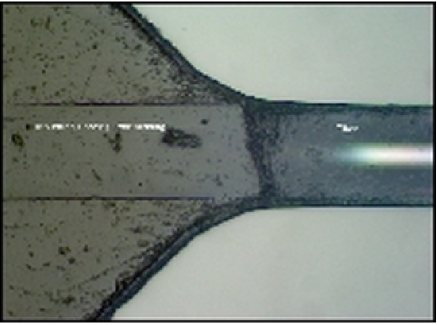
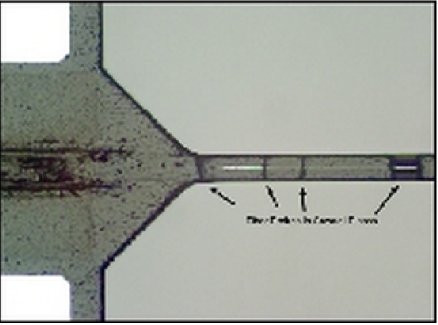
This particular connector had multiple fractures inside ceramic ferrule (photo A.1-A.3) and a substantial length of fiber missing. See photos A.2 and A.3. From the location of the missing fiber, it appears that the section of fiber came out during assembly prior to thermal curing. This particular fiber received substantial shock during the assembly process (during the fiber insertion). I have seen this before with tight fitting ferrules where fiber was fractured and broken off inside ceramic ferrule while trying to push the fiber thru the hole. Not knowing exactly what hole size this is it appears that the cause of the failure is related to how the fiber was inserted into the ferrule.
Connector B

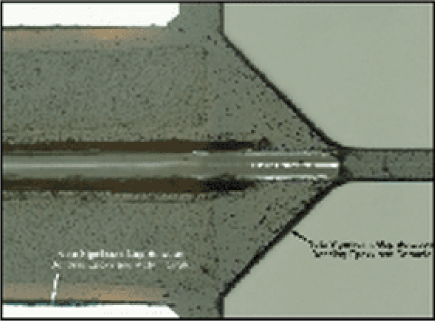
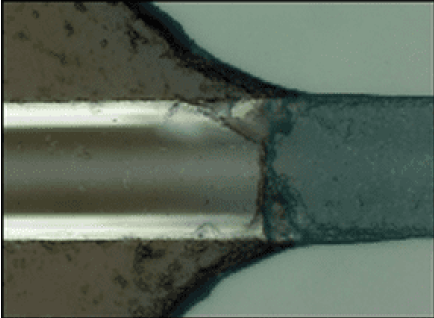
This connector has (1) distinctive fiber fracture at the beginning of the ceramic internal chamfer (photo B.2). I did notice more than usual “epoxy shrinkage” against the walls internally. This shrinkage during the thermal curing contributed to the fiber fracture where a nick fatigued the fiber and the stresses of thermal curing and shrinkage actually separated the fiber at this location. The remaining fiber trapped inside the shaft of the ferrule acted as an anchor point. This is the most common problem created by the nicking of the fiber from the improper use of mechanical strippers or misaligned blades.
Connector C
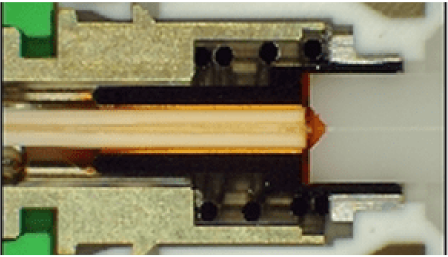
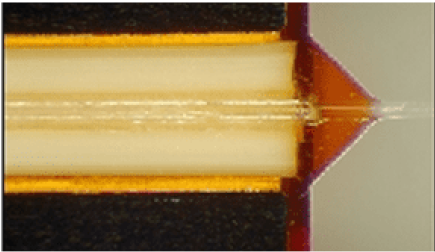

There is a substantial gap between the end of the stripped buffer area to the point of breakage (just inside the internal chamfer of the ceramic ferrule). Also evident is the shrinkage of epoxy which is quite apparent against the chamfer. It appears that the epoxy inside the ferrule cured first and acted as an anchor point during the thermal curing process. As the thicker regions of epoxy were curing either accidental backward movement of the fiber pulled and fractured the fiber, creating the visible gap, or the rapid shrinkage of the epoxy pulled everything and “separated” from the anchored fiber inside the ferrule

Your Technical Resource for Cross Sectioning
Fiber Optic Center now offers the full equipment package and training to companies for internal cross sectioning services. Click here to request information on cross sectioning services




